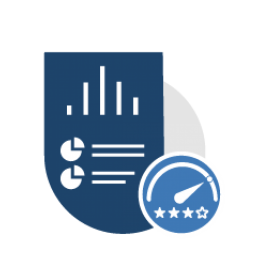



Sound practices and tools for credit risk management are essential to the long-term success of banking organizations and financial services providers test
Our credit risk experts help Banks and FIs on the identification, modelling, measurement, monitoring and management of their credit risks. We provide clients with a full range of wholesale and retail credit risk management and workflow improvement services.







As discussed in our previous blog, PIT PD describes an expectation of the future, starting from the current situation and integrating all relevant cyclical changes & all values of the obligor... Read More

Aptivaa developed several PD and LGD models for Retail and Corporate portfolios and delivered a strategic roadmap to the client to attain IRB Compliance. Read More

A key metric that summarizes the credit worthiness of a bank`s obligor is the Probability of Default (PD). Besides credit worthiness assessment and capital computation under IRB, PD is one.. Read More

Aptivaa assisted the Bank in the development of PD, LGD, EAD models, preparing an implementation... Read More

Aptivaa developed statistical PD model for Corporate portfolio of the Bank and supported in calibration of the... Read More

Aptivaa built LGD models for the Bank's portfolio in Real Estate, Corporate Lending, Asset Backed Lending and Leasing. Read More

Aptivaa's deliverables to the client included the review and validation reports of existing models, along with the... Read More

Aptivaa helped the client in implementing Basel II Credit Risk IRB approach and assisted them in submitting their IRB... Read More

Aptivaa helped the client to generate quantifiable credit risk ratings for Corporate finance, Project finance and Structured Trade finance... Read More

Aptivaa provided new Application scorecards to the client which significantly improved the performance statistics over the existing Bureau... Read More

Aptivaa helped the client establish the linkages of macroeconomic variables with economic capital through the use of... Read More

Aptivaa carried out a credit audit of client's credit processes, credit assessment and a review of their portfolio quality to identify the weaknesses in... Read More

Aptivaa conducted successive independent reviews of the model validation work on several portfolios performed by the Bank's internal... Read More

A leading regional financial services group headquartered in Qatar and operates through its subsidiaries spread across MENA... Read More
Subscribe to our insights to get them delivered directly to your inbox